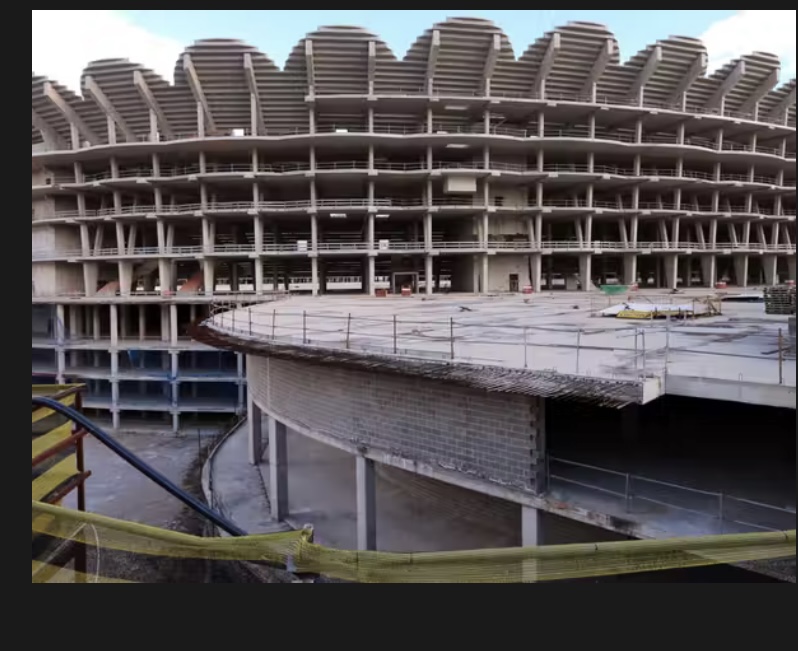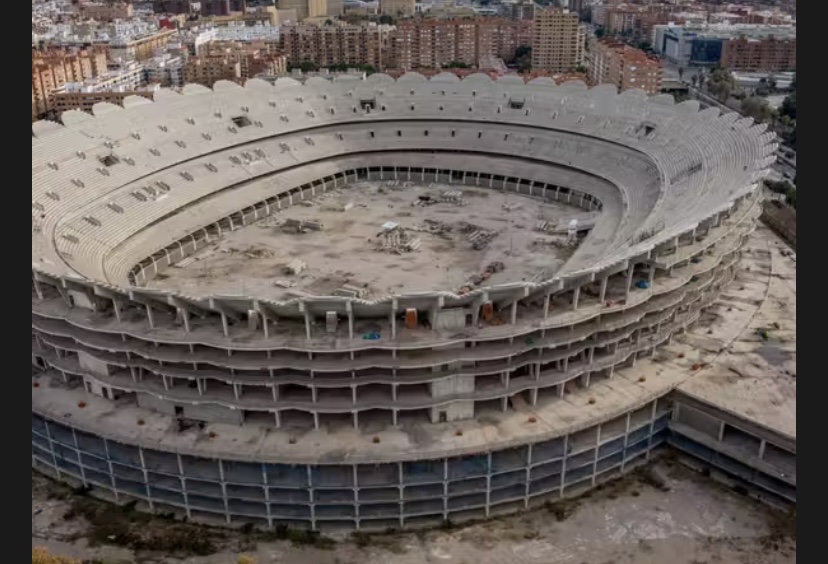Valencia’s Nou Mestalla: A Monument to Unrealized Ambitions
In the annals of football history, the tale of Valencia CF’s Nou Mestalla stands as a stark reminder of ambition tempered by financial turmoil and logistical setbacks. What was envisioned as a state-of-the-art stadium, set to rival the best in the world, has languished incomplete for almost two decades, embodying a saga of dashed hopes and persistent challenges.
**Ambitious Beginnings**
Conceived in 2006 and commenced in 2007, the Nou Mestalla was touted to be an architectural marvel—a 75,000-seat colossus complete with 25,000 square meters of commercial space, envisaged to redefine
Supported by local authorities and buoyed by plans to host the 2010 Champions League final, Valencia secured €260 million in loans from local banks, predicated on selling their existing Mestalla stadium to fund the new project. However, the onset of Spain’s economic downturn in 2008, compounded by a severe banking crisis, quickly dashed these hopes.
**Financial Turbulence**
As economic realities bit hard, construction progress faltered. By 2009, with debts soaring to almost €550 million, the club found itself unable to sustain the project’s momentum. The then-president, Juan Soriano, reluctantly halted construction, leaving behind a stark concrete structure—an eerie testament to halted ambition, earning the moniker ‘ghost stadium’.
**Years of False Starts**
Subsequent years witnessed sporadic attempts to resurrect the project. Negotiations with Bankia in 2011 promised a revival, only to collapse amidst financial uncertainties. A revised design in 2013 downsized the stadium’s capacity to 61,500, yet no concrete plans for resuming construction materialized. Further false starts in 2017 and 2020 compounded frustrations, leaving Valencia fans disillusioned and the Nou Mestalla a poignant symbol of unfinished business.
capacity to 61,500, yet no concrete plans for resuming construction materialized. Further false starts in 2017 and 2020 compounded frustrations, leaving Valencia fans disillusioned and the Nou Mestalla a poignant symbol of unfinished business.
**Current Challenges**
In 2021, hope flickered anew with La Liga’s lucrative deal with CVC Capital Partners injecting €120 million into Valencia, ostensibly earmarked for resolving the dual stadium dilemma. However, the club’s staggering €500 million debt remains a formidable hurdle. Efforts to sell the old Mestalla site, intended to fund the Nou Mestalla’s completion, are stymied by the uncertainty surrounding Valencia’s future venue.
Club president Lay Hoon Chan’s optimistic declarations about impending progress have met skepticism, with potential buyers wary of committing amid the unresolved stadium quandary. The complex financial entanglements and the practical challenges of completing a project mired in nearly two decades of stagnation underscore the magnitude of Valencia’s plight.
**Looking Ahead**
As Valencia CF navigates the labyrinthine path towards stadium completion, questions persist about the club’s financial viability and its ability to realize the Nou Mestalla dream. The saga serves as a cautionary tale in football governance, highlighting the pitfalls of overreaching ambition without a robust financial framework.
Ultimately, the fate of the Nou Mestalla remains uncertain—a testament not just to Valencia’s aspirations but to the enduring complexities of modern football economics. Whether the stadium rises as a phoenix from its protracted ashes or remains a poignant reminder of what could have been, only time and decisive action will tell.
In the heart of Valencia, the ghostly silhouette of the Nou Mestalla stands as a silent witness to ambition deferred—a beacon of hope awaiting its final chapter in the storied history of one of Spain’s most beloved football clubs.
Leave a Reply